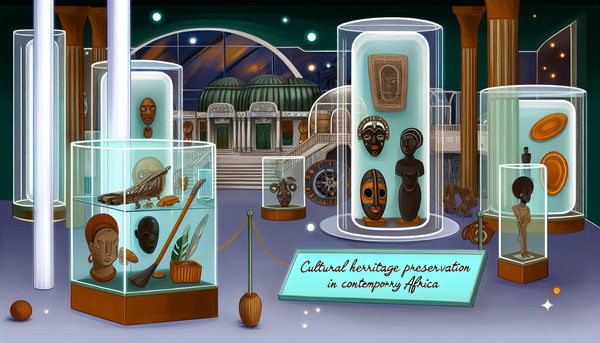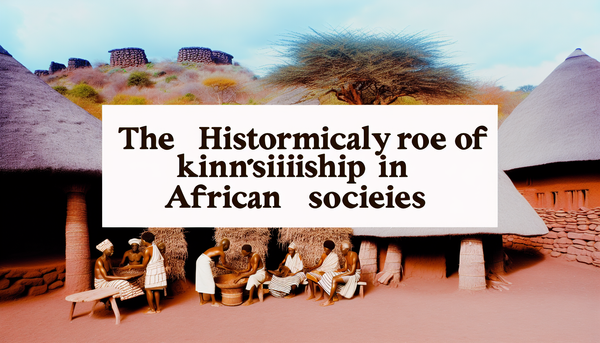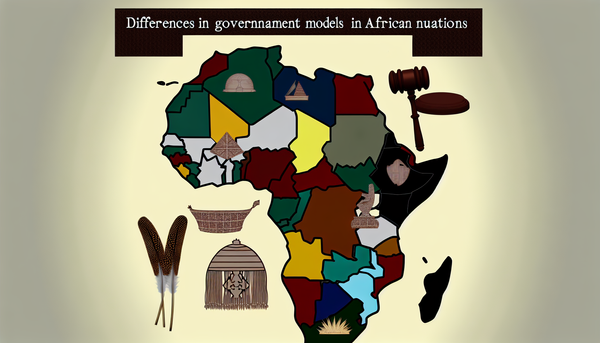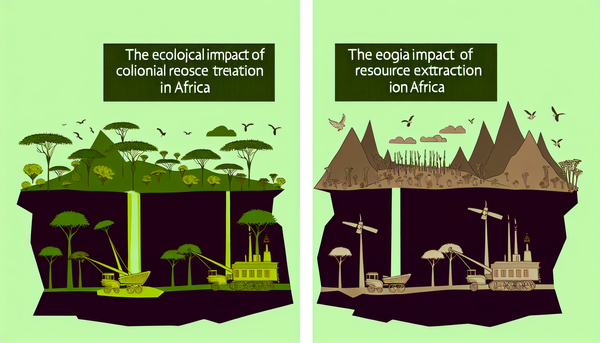10000 BC, Humans begin to migrate from Africa to other parts of the world
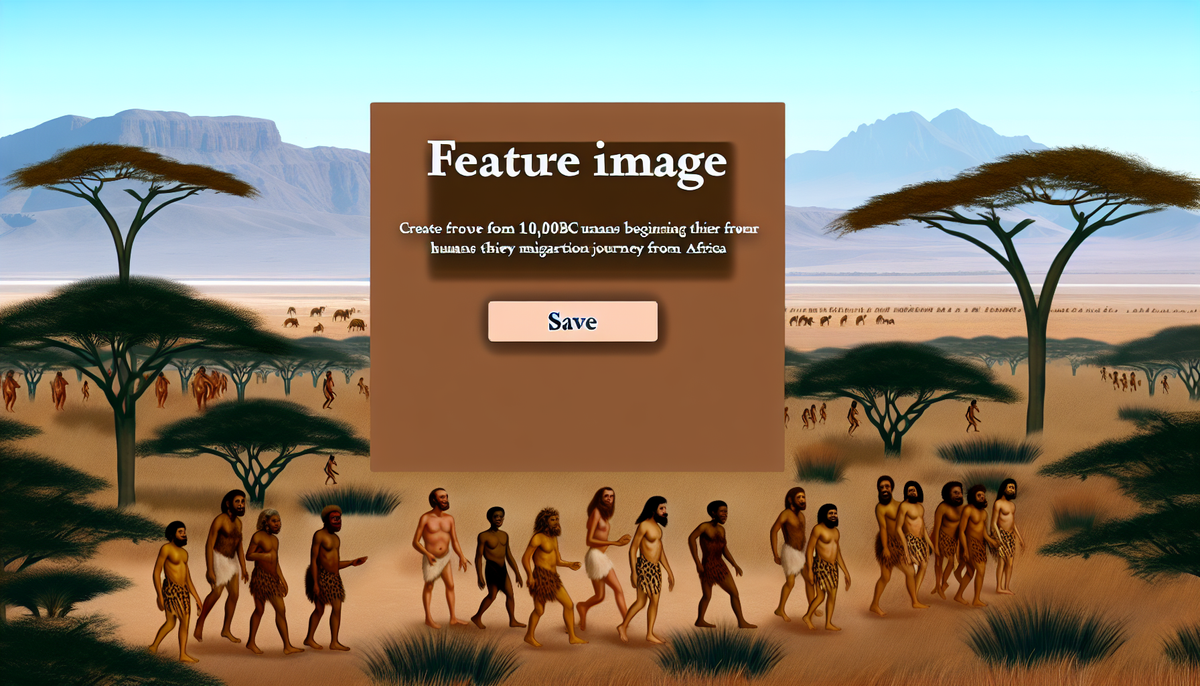
The Dawn of Human Migration: Out of Africa
Around 10,000 BC, a significant chapter in human history began as populations started to migrate out of Africa, a continent recognized as the cradle of humanity. This massive movement was driven by various factors, including climate changes, food scarcity, and the quest for new resources. As the last Ice Age ended, warmer temperatures transformed landscapes, prompting groups to venture beyond their familiar territories.
These early humans were not only skilled hunters and gatherers but also innovative problem solvers. They developed tools and techniques to adapt to diverse environments, from dense forests to arid deserts. As they spread across regions like Europe, Asia, and Oceania, they encountered new challenges and opportunities that fostered cultural exchanges and the development of distinct communities.
The migration process was gradual and occurred over thousands of years, marked by a series of waves rather than a single exodus. Genetic evidence suggests that all non-African populations today share common ancestry with these early emigrants. Their journey not only shaped human history but also set the stage for the rich tapestry of cultures and societies that would emerge worldwide. In essence, this period marked the beginning of humanity's diverse and dynamic existence outside the African continent.
Charting New Horizons: Early Navigational Skills and Tools
As humans began their migratory journeys out of Africa, their success relied heavily on the development of early navigational skills and tools. Adapting to diverse environments required not only instinctive understanding of the land but also the ability to navigate unfamiliar terrains. Early humans used natural landmarks, patterns of stars, and celestial bodies to chart their course, showcasing an impressive capacity for observation and orientation.
One of the earliest tools that facilitated exploration was the use of simple but effective navigation aids. For instance, early humans crafted basic compasses using magnetite or naturally occurring minerals that pointed towards magnetic north. Additionally, the invention of tools like the atlatl—a spear-throwing device—increased hunting efficiency, enabling groups to venture further in search of new habitats and resources.
Seasonal patterns, animal migrations, and vegetation cycles also played significant roles in guiding these pioneering explorers. The ability to record and pass down knowledge through oral traditions ensured that vital information about routes and survival tactics was shared among generations. This foundation of navigational proficiency allowed humans to adapt and thrive in countless environments, ultimately leading to the establishment of diverse populations and cultures around the globe. The evolution of these skills marked a critical transition in human history, paving the way for future exploration and settlement.
Adaptation to Diverse Climates and Terrains
As humans migrated from Africa into various parts of the world around 10,000 BC, they encountered a wide range of climates and terrains. This presented both challenges and opportunities that demanded significant adaptability. From the icy tundras of the north to the tropical rainforests of the equator, diverse environments necessitated innovative survival strategies.
In colder climates, early humans developed warmer clothing from animal hides and learned to build insulated shelters, such as igloos and pit houses, to withstand harsh winters. Their hunting techniques evolved as they learned to track migratory animals, utilizing tools crafted from stone, bone, and later, metal. Knowledge of the environment grew, enabling them to forage for native plants and identify seasonal food sources.
Conversely, those who settled in warmer regions adapted by utilizing their understanding of agriculture. They began to cultivate grains and domesticate animals, establishing stable food supplies. Water management techniques were developed in arid areas, facilitating the growth of communities around vital resources.
This remarkable adaptability not only secured survival but also laid the groundwork for social structures, trade, and cultural exchanges. Ultimately, it shaped the rich diversity of human experience, as populations customized their lifestyles to thrive in their respective environments.
Cultural Exchange and Early Human Settlements
As human groups migrated and settled across different regions, cultural exchange became a hallmark of their interactions. The establishment of early human settlements facilitated contact between diverse populations, fostering the sharing of ideas, technologies, and traditions. These interactions were crucial in shaping the development of societies and enriching cultural practices worldwide.
With the advent of agriculture, many communities transitioned from nomadic lifestyles to more sedentary living, creating stable settlements. These villages became hubs for trade and social interaction, allowing different groups to engage in barter and exchange of goods, such as tools, food, and crafts. This exchange not only expanded their material culture but also led to the blending of customs and beliefs.
Early art forms, such as cave paintings and carvings, depicted shared experiences and narratives that highlighted the interconnectedness of these communities. Rituals, languages, and religious practices also evolved through this cultural intermingling, creating a rich tapestry of human expression.
Moreover, these early settlements served as a foundation for future civilizations. The pooling of knowledge and resources laid the groundwork for advancements in governance, architecture, and technology. As a result, cultural exchange became a driving force in the emergence of complex societies and the enduring legacy of human civilization.
Technological Innovations and Survival Strategies
The migrations of early humans out of Africa were driven not only by necessity but also by remarkable technological innovations that enhanced their survival strategies. As they adapted to a variety of environments, early humans employed an array of tools and techniques that significantly improved their chances of thriving in unfamiliar landscapes.
One of the most transformative innovations was the development of stone tools, such as hand axes and scrapers. These tools facilitated hunting, gathering, and food preparation, allowing early humans to efficiently exploit their surroundings. Over time, advancements in technology led to the creation of specialized tools like fishing implements and projectile points, which enhanced food acquisition methods.
In addition to tools, early humans also experimented with the use of fire, which played a crucial role in their survival. Fire provided warmth, protection, and a means for cooking food, making it safer and more nutritious. This skill not only improved diets but also allowed for social gatherings around the hearth, fostering community bonds.
Moreover, advancements in clothing, such as the use of animal hides for warmth and protection, showcased human ingenuity in adapting to diverse climates. These technological innovations were essential in overcoming environmental challenges and laid the groundwork for future developments, ultimately shaping human society and culture for millennia.
Impact of Migration on Global Biodiversity
The migration of early humans out of Africa had profound effects on global biodiversity, shaping ecosystems and influencing the distribution of species. As human populations dispersed across continents, they interacted with various flora and fauna in unprecedented ways, resulting in both ecological changes and adaptations within species.
One of the most significant impacts was the shift in hunting practices. Early humans became apex predators in many regions, hunting megafauna like mammoths and giant ground sloths. This increased predation pressure contributed to the extinction of various species, particularly in isolated ecosystems where large mammals had evolved without natural predators. The disappearance of these creatures altered food webs and reshaped ecological balances.
Conversely, the introduction of humans to new environments also facilitated the spread of species. With their agricultural practices, early humans cultivated plants and domesticated animals, leading to the distribution of crops like wheat, rice, and maize across continents. This agricultural expansion transformed landscapes and ecosystems, often replacing natural habitats with farmland.
Furthermore, the movement of human populations contributed to the exchange of species, both intentionally and unintentionally. As a result, biodiversity patterns evolved, affecting not just plants and animals but also human cultures intertwined with their environments. Overall, the migration of early humans played a pivotal role in shaping the world's ecological framework and biodiversity.
Archaeological Discoveries and Historical Insights
Archaeological discoveries have significantly enhanced our understanding of early human migration and cultural development. Through excavations of ancient sites, researchers have unearthed artifacts, tools, and remnants of dwellings that provide valuable insights into the lives of our ancestors. These findings reveal not only the technological advancements they made but also their social structures, dietary habits, and interactions with the environment.
One notable discovery is that of the "Venus figurines," small statuettes found across Europe that highlight the artistic expression and possible religious beliefs of early human communities. Similarly, cave paintings, like those in Lascaux, France, showcase not only the artistic talent of early humans but also their connection to the animals they coexisted with, serving as a testament to their survival strategies.
The discovery of early agricultural sites, such as Çatalhöyük in modern-day Turkey, has provided crucial insights into the transition from nomadic lifestyles to settled farming communities. These findings illustrate the rise of complex societies and the development of trade networks.
Furthermore, advancements in dating techniques, such as carbon dating, have allowed researchers to construct more accurate timelines of human history, revealing the intricate patterns of migration and adaptation. Overall, archaeological discoveries continue to enrich our understanding of early human life, shaping the narrative of our shared past.
